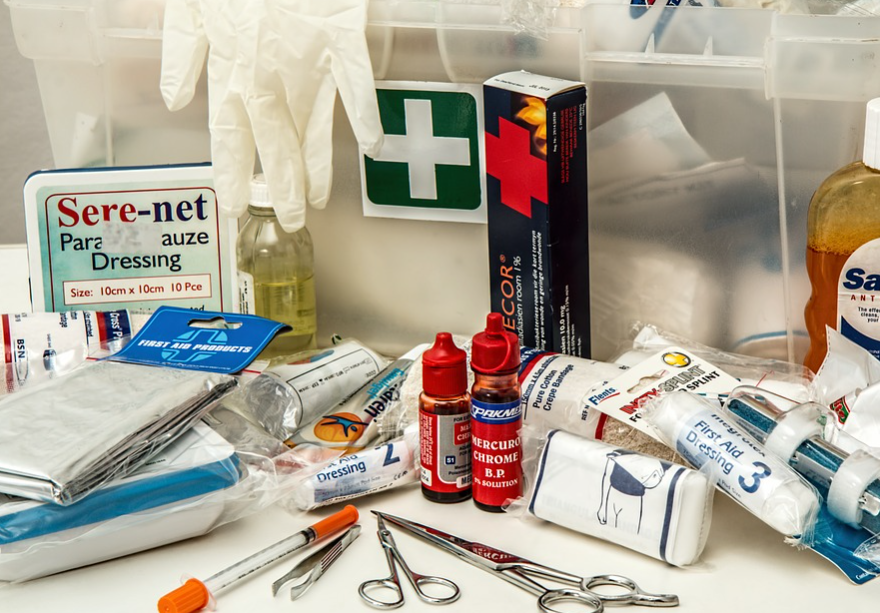The study on medical malpractice insurance had been started in the 1970s. This study indicated unexpected results where one from twenty patients might undergo medical malpractice, and one from ten died.
Another similar research is conducted in the next decades. Harvard research teams investigate more than 50 hospitals in New York. In this case, the research findings showed that of the 31,000 hospital records analyzed, nearly 8,000, which is one in four patients, showed future medical injury.
Although such a horrible tragedy occurred in the past, the data is scary. However, the fact that there is still a possibility that the crisis s not over yet can be even more terrifying. The Institute of Medicine even has disclosed the data that nearly a hundred thousand people passed away in one year due to medical errors. Understandably, this is very upset and terrible. However, we have to be ready to face any medical injury during your treatment in the hand of a hospital institution. Hence, let yourself be familiar with the common injury occurred during you or your loved ones stay in a hospital for treatment.
Birth Injuries
 During childbirth, complications can result in injury or death to the baby, the mother, or both, especially if the attending physician fails to provide adequate care before or during delivery. In this case, inadequate maintenance can include failure to manage blood tests to detect abnormalities. Also, it can happen because of the inability to understand signs of fetal distress, failure to identify signs of respiratory distress, and failure to perform a cesarean section when it was crucial. This medical injury can cause several issues toward the baby, such as cerebral, Erb’s, or brachial palsy. Other cases are facial paralysis and clavicle fracture. The latter can happen when delivery procedures are in a rush that resulted in birth with broken buttocks and bones, or failure to provide adequate care for a premature baby.
During childbirth, complications can result in injury or death to the baby, the mother, or both, especially if the attending physician fails to provide adequate care before or during delivery. In this case, inadequate maintenance can include failure to manage blood tests to detect abnormalities. Also, it can happen because of the inability to understand signs of fetal distress, failure to identify signs of respiratory distress, and failure to perform a cesarean section when it was crucial. This medical injury can cause several issues toward the baby, such as cerebral, Erb’s, or brachial palsy. Other cases are facial paralysis and clavicle fracture. The latter can happen when delivery procedures are in a rush that resulted in birth with broken buttocks and bones, or failure to provide adequate care for a premature baby.
Surgical Injuries
 A high percentage of medical malpractice occurs in surgical settings, usually due to poor preparation and care. It sometimes leads to irreparable or fatal consequences. Mistakes such as premature or improper induction of anaesthesia, improper surgical process, accidentally puncturing or cutting internal organs, working on the wrong body part or person, leaving surgical instruments or specimens on the torso, and neglecting to diagnose and treat post-operative infections can be the issue for medical malpractice. Surgical such problems can lead to several injuries, such as suffocation, blindness, paralysis, hypoxic and anoxic brain injury, cardiovascular issues, and many others.
A high percentage of medical malpractice occurs in surgical settings, usually due to poor preparation and care. It sometimes leads to irreparable or fatal consequences. Mistakes such as premature or improper induction of anaesthesia, improper surgical process, accidentally puncturing or cutting internal organs, working on the wrong body part or person, leaving surgical instruments or specimens on the torso, and neglecting to diagnose and treat post-operative infections can be the issue for medical malpractice. Surgical such problems can lead to several injuries, such as suffocation, blindness, paralysis, hypoxic and anoxic brain injury, cardiovascular issues, and many others.
Infections, Septicemia, and Bleeding
Attempting to create a sterile environment during surgery has been shown to result in infection or bleeding. Some cases sometimes result in a fatal outcome. Blood transfusions have been shown to cause infections, mostly when the wrong type of blood is offered during emergencies. Physicians are required by law to have disease protocols and monitor surgical patients to prevent further illness and bleeding.
Misdiagnosis or Failure to Diagnose
There are instances when a person’s life depends on what the doctor does or does not do. The physician must find out if there is something wrong with the person and what it is. Misidentification or perhaps failure to diagnose a disorder can sometimes lead to severe discomfort, chronic pain, or maybe death.
Medication Errors
Mistakes in the form of the wrong mediation can also happen to be a common injury. Doctors have to prescribe in the right dose as a treatment. However, when there are medication errors such as wrong dose, inappropriate medications prescription, or wrong drug combinations. Besides, prescribing medications that the patient is allergic to, rather than treating the patient, can lead to severe allergic reactions and sometimes death. Medication errors can be occurred not only from the doctors prescription but also in pharmacies when pharmacists offer the wrong medication to the patient.

